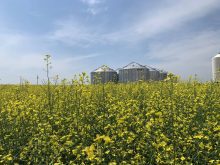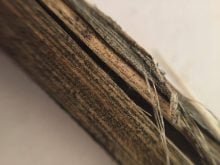How exactly do researchers and plant breeders separate the susceptible from the partially resistant? They use the stem test.
The stem test simulates natural sclerotinia infection of canola, Lone Buchwaldt of Agriculture and Agri-Food Canada explains. Typically spores colonize petals that adhere to the plant stem. The leaf axle is a hot spot for infections, as it collects moisture. This creates an ideal environment for spores to germinate.
To prepare for the stem test, researchers produce sclerotinia mycelium in Petri dishes. Then they cut out plugs of sclerotinia and place them on canola stems. To hold the sclerotinia in place, they wrap plastic (called Parafilm) around the stem.
- Read more: More sclerotinia resistance coming soon
In the following weeks, whitish lesions develop on the stem. Average lesion length shows the difference between resistant and susceptible lines. Researchers also evaluate stem collapse to separate susceptible and resistant lines.
Buchwaldt has been using the stem test for over 10 years, and it’s also used by others in private canola breeding programs. The Western Canada Canola/Rapeseed Recommending Committee (WCC/ RRC) has approved the stem test to evaluate new canola varieties with resistance claims.

The WCC/RCC decision was based on data collected by nine plant pathologists and breeders between 2011 and 2015. Researchers used a susceptible and a partially resistant Pioneer variety as checks to see if they could detect differences using the stem test. They found a 19 to 37 per cent reduction in stem lesion length in the partially resistant check.
Clint Jurke, agronomy director for the Canola Council of Canada, says the stem test levels the playing field for farmers. “Now everyone’s using the same protocol. And if they are making claims at least you can be confident that they’re being measured in similar ways.”
















